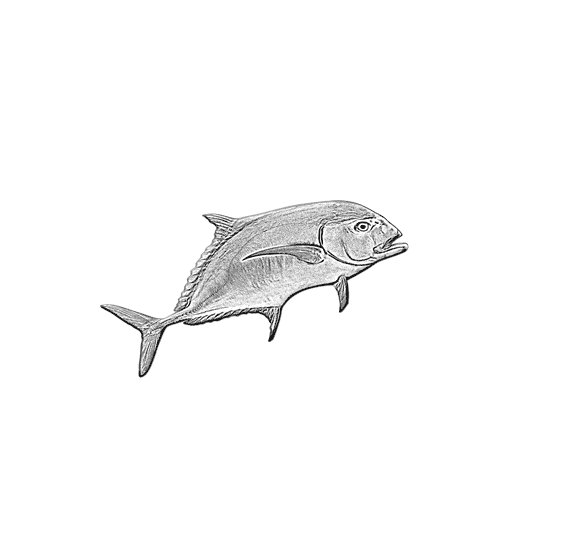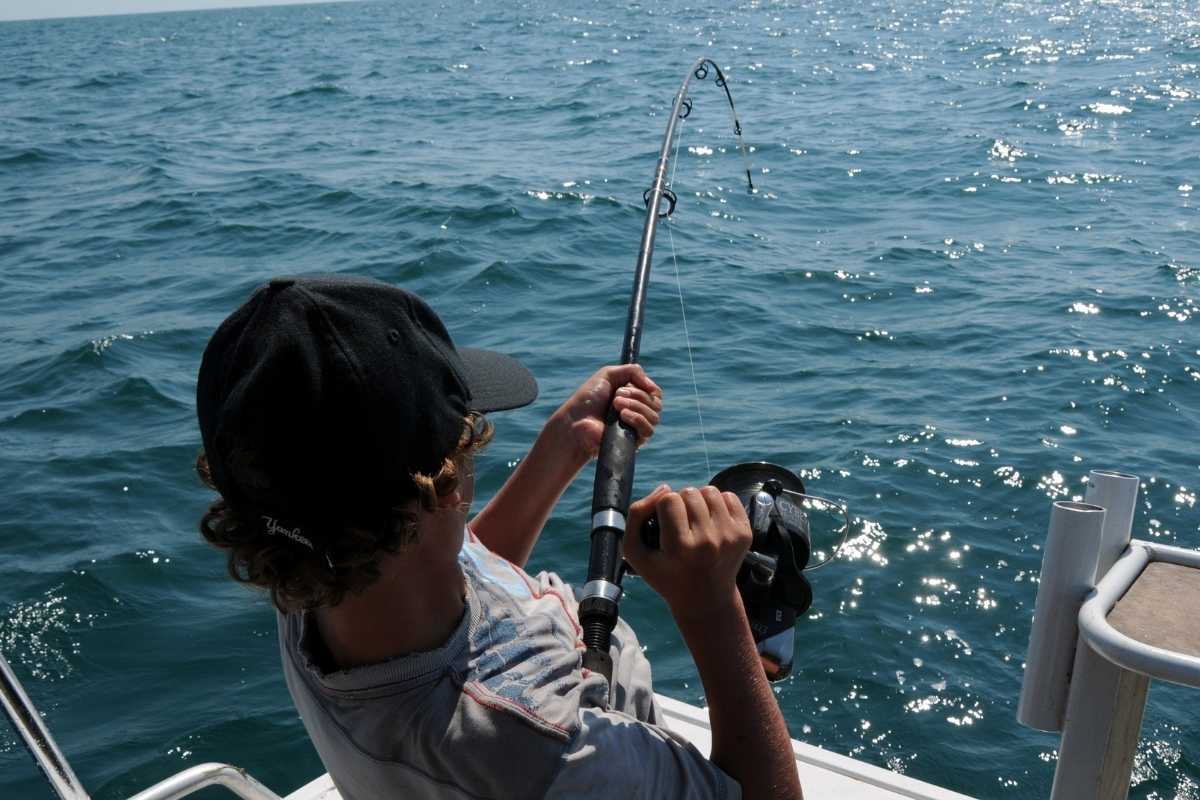Weight! No, not wait, weight! That’s right, we are going to dive into a very important topic when fishing, and that’s about weights.
I still call them sinkers, but what I am talking about is those little metal things you put on the end, or sometimes further up, on your line to make your bait drop to the bottom of the water you are fishing in.
Now, I know what you are thinking and you are probably going to say “Does it really matter how much weight I use to get my bait down there?”, and the answer is YES.
Using too much, or too little weight can have a drastic impact on the performance of your fishing, which can make a day out on the water a really good, or really bad one.
Take a look below and lets dive in to see if we can break down how much weight to use when fishing, if any at all to get the most out of your fishing day.
What is the Purpose of Fishing Weights?
Fishing weights, or sinkers, are designed to do one thing- get your bait to the bottom of the lake, pond, or any body of water you have to fish in.
It is really important that you have the right type of weight, and the right amount on your line to make your fishing day better. So, you want to use as little weight as possible to get your bait to the bottom.
When it comes to fishing and weights, less is more! Try a small weight out at first and add to it if necessary, but don’t dive right in and put a six ounce weight on and have that thing torpedo to the bottom ripping your bait off.
If you are fishing with four to six pound test, its not going to take that much to get to the bottom, I usually use a quarter to half ounce sinker when fishing for bass, and that works just fine for me.
If you are in the ocean, and really deep water, its going to take quite a bit more. Keep in mind that the more weight you add, the more stress you put on your line, and gear.
Types Of Fishing Weights
There are roughly seven common types of sinkers that anglers use that I am going to briefly go into. Keep in mind their are others, like ones that screw into your worms, etc., but these are going to be found in most peoples tackle box and local outdoor store.
Split Shot Sinker
This is the most common type of weight and looks like a little ball on the end with an open mouth and teeth. It has two little tails on the end that you can crimp with pliers to open it back up.
Once you crimp the “mouth” of the sinker together on your line, it should stay in place when you throw your line out, but be careful of cutting your line when crimping it.

Rubber Core Sinker
This weight looks like a little torpedo, and has a small piece of rubber that runs through the middle of it, and has a small split down the middle of it, where you can put in your line, and then pull on each rubber ear on the end to thread the ends of your line through so it will stay in place.
Be careful of how hard you throw though, or the weight might move up and down your line.

Bell Sinker
This looks like a little tear drop, and in the shape of a bell, and has a little brass loop at the top of it where you can tie your line onto.
These are very popular weights for anyone fishing onshore or boat, and because they are rounded, they have a less likelihood of snagging on trees, weeds, and rocks on the bottom, but are also good when rigged on boats for things like downriggers. This is usually my go-to weight when fishing for bass.
Pyramid Sinker
This weight gets its name because it really does look like a pyramid in that it has a pointed end and has a brass hoop at the flat base of it and not the end.
These are like bell weights in that they tie onto the end of your line and because of the streamlined nose, it sinks to the bottom much faster through the water.
Muddy and sandy bottoms are the best for this weight because it torpedo’s to the bottom and lodge itself in so your bait will not move as much when you are trying to leave the bait in one spot.
Walking Sinker
These weights are specifically designed for trying to move bait across the bottom of the water, and look like a rectangle with rounded edges, and has an eye at the top. The base is usually wider and angled upward a little bit.
This weight allows for the line to move up and down through the weight and is one of the best for not snagging on the bottom. If you want to move something nice and slow through the bottom of your lake, this is the best weight to use.

Egg Shaped Sinker
The egg shape weight is another commonly used sinker for anglers, and has been around a long time. These weights really do look like an egg, and have a hole all the way through the middle.
You can thread your line through it and the egg weight will slide up and down on the line rolling along the bottom. These weights are great for catfish and bottom feeders and are almost 100% snag resistant because of the smooth outside.

Cone and Bullet Shot
The cone weight is almost like the egg shaped sinker in that it has a hole through the middle that you can thread your line through which allows the weight to move up and down your line, but has a much narrower tip that is great for weeds.
Since it has a nice bullet front on it, you can pull the weight through weeds without getting snagged on anything.

Other Unique Fishing Weights
While fishing weights can be a simple as using a screw when in a pinch, there are other weights out on the market that claim to have a more innovative design, which helps in the pursuit of catching more fish.
There are many unique products out on the market that may be worth a shot the next time you are out on the water! Check out the banana-shaped fishing sinkers we linked to below as an example!

These are the most common types of weights that I keep in my tackle box, but there are many more on the market.
Each weight is designed to do something different, or sometimes for a different types of fishing techniques, or fish you want to catch. If you stick with these seven, or even just a few of them, you can handle just about any fishing environment you come across.
Do You Use Weight With a Lure?
Generally, lures are made from metal, like Kastmasters, so they are going to naturally sink when fishing if you stop reeling them in, so you shouldn’t need to add any extra weight to your lure unless you are fishing extremely deep water and want it to sink fast.
Keep in mind that the more weight you add to your lure, the more your rod is going to bend when reeling it in. Lures are designed to move through the water in a way that makes it look like hurt or dying insects or fish, so we do not want to disturb that in any way.
Depending on how fast you reel in your line, the fish is going to have to swim after it and strike it unless you drag it across its body and side hook it (yes, this really happens). If you must use weight when fishing with lures, I would suggest putting it right at the nose or swivel, so you still get the effect of your lure.
Are Fishing Weights Bad for the Environment?
When people started designing fishing weights, they started making them from lead because it was cheap. For split shot sinkers, they were easy to open and close because the lead was softer, so you could actually take a pair of pliers and crimp them onto your line.

Since lead is not extremely safe for the environment, there have been states that have outlawed the use of lead sinkers, so anglers are having to switch to other metals like brass, steel, bismuth and tungsten, which are much safer for both the shore, and the water.
Since lead is still used today, and hasn’t been just straight banned from all areas, the toxicity levels, are not as bad as people might think.
However, all anglers should be careful when using weights and make sure that if something from their tackle box spills, you should clean it up as soon as possible and not leave it for it to be eaten by an animal or leached into the ground. I believe its only a matter of time before lead weights are completely outlawed for fishing.
In Summary
We have covered a lot of different weights in this discussion, and it can be daunting at times to try and figure out what you actually need to get the job done without overkill.
If you use too much, your rod is going to be bent in half when you are reeling in your line, and you will miss bites, but if you don’t use enough, its going to take more time for your bait to get to the bottom, or not keep the bait where you want it to be because it will easily move through the water.
Watch your line weight, where you are fishing. and consider the type of rod you have. These items provide a good estimate of how much you need to get your bait to the bottom.

